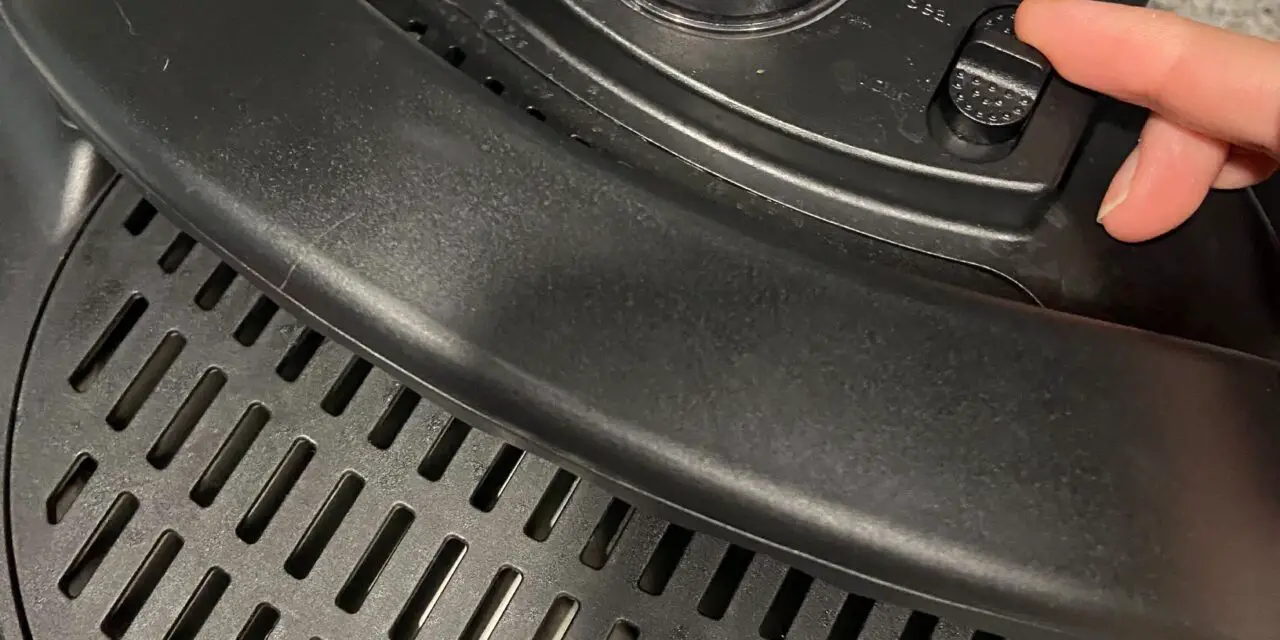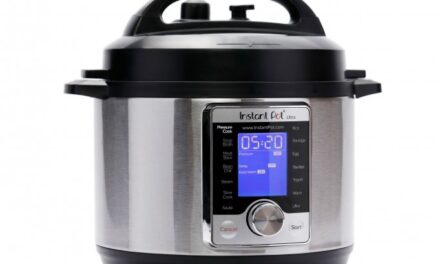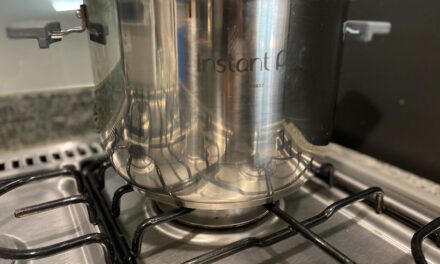The Instant Pot is a fantastic kitchen appliance that allows you to pressure cook foods and cut typical cooking times in half. Using the Instant Pot can be challenging, though, especially when people consider the differences between quick release and natural release.
The main difference between the quick release function and the natural release function is that one occurs naturally while the other occurs manually. The Instant Pot will naturally release on its own over time if it is not manually disrupted. The quick-release option is better if you are in a rush and need your food faster.
Understanding the fine tune facets of the Instant Pot can be difficult. This appliance is so versatile and high-functioning that it can be overwhelming. Keep reading to get your most commonly asked questions answered regarding everything quick release vs. natural release.
What are Natural Release and Quick Release?
Before beginning a recipe, it is important to understand the difference between natural release and quick release. If you release the food the wrong way, it can result in a poorly made meal or even ruin the meal altogether.
Also, if you’re wondering, there are some ways you can use your Instant Pot without the steam release valve.
Natural Release
The natural release function doesn’t require extra work, but when you read a recipe for the first time, you might wonder, what is natural release on an Instant Pot?
Natural release occurs when the Instant Pot finishes its cook time, and the user lets it sit. This allows the Instant Pot to release pressure on its own over time.
This ideal way to release pressure on hard-to-cook meats, stews, or other foods that will not burn or overcook easily.
Quick Release
Quick release is the manual release of the pressure in the Instant Pot via the fast-release valve on the lid.
This releases the pressure in the pot quickly so you can get to your food faster. This is a great way to prevent food from overcooking. Use it on pasta and yogurts.
What is an Abbreviated Natural Release?
An abbreviated natural release is a process where you begin depressurizing your Instant Pot via Natural Release.
After about 10 minutes, you go to the pot and begin the quick release process to finish the depressurizing process.
This combined method is abbreviated as natural release as it shortens the full natural release process.
This method is great when you are busy preparing other dishes in the kitchen. The food can naturally depressurize, and then you can finish it when you are done working with other food or dishes.
What Is Intermittent Release?
Another popular release method is known as intermittent release. This is when a user uses the quick-release valve intermittently.
The user will go over, let the quick release occur for a few moments, and seal it back off. This is repeated over time until the pressure is gone.
The main purpose of this type of release is to prevent foam from coming out of the quick-release valve.
This prevents a mess from occurring and the foam from burning down the side of the Instant Pot.
Do You Turn Instant Pot Off For Natural Release?
You do not have to turn the Instant Pot off for natural release to occur. Natural release is named as such because the process occurs naturally.
The heating element of the Instant Pot turns off, the pressure stops rising, and over time, as the pot cools down, it naturally releases through the valve.
You can tell that the natural release has finished when the float valve is dropped.
Users will not see steam from the release valve when the pot is naturally depressuring.
It will not beep and will not make a noise when the lid unlocks. The only indication is the float valve being all the way down.
It can take five to thirty-five minutes for a natural release to finish. Do not try to open the lid manually in between unless you follow the safety instructions for doing so as if it were being done by quick release.
The lid can fly and cause injury if it is not done safely.
Will my Instant Pot Natural Release on Keep Warm?
Yes, your Instant Pot will continue natural release on keep warm. The keep warm function automatically kicks in once the food in the Instant Pot is done with its cooking cycle.
The keep warm function only keeps the pot warm and has no bearing on adding or subtracting pressure in the pot.
When the food is done, you can leave it alone when it turns over to keep warm. Ensure that you let it sit for up to a half hour before opening the lid.
Alternatively, if you are an Instant Pot whizz, you can take the lid off when the float valve has completely decompressed and is no longer up on the pot.
Will My Instant Pot Quick Release On Keep Warm?
You can still perform a quick release if your Instant Pot is switched to Keep Warm.
The keep warm function does not affect the quick release process. It simply keeps the food warm after the food has been cooked.
This is a good way to opt to release the pressure as it occurs faster than the natural release option.
The natural release can take 5 to 10 minutes, while quick release only takes between 2 and 5 minutes.
When to Quick Release With Instant Pot?
The best time to use Quick Release with the Instant Pot is when you are cooking sensitive foods that can easily overcook or when you are in a rush to get a meal done, and the food is cooked through already from the pressure cook time.
For example, if you are cooking a pasta dish inside the Instant Pot, you should use quick release once the cooking time is done.
If the pasta stays inside the pot, it will quickly get overcooked and mushy. This will also happen with other delicate foods, which is why quick release exists.
How Long Does it Take to Natural Release?
A natural release takes anywhere between 5-35 minutes total to complete.
Each meal will take more or less time depending on the quantity of food, the pressure level used to cook the food, and how long the pressure was sustained during the cooking process.
It is not safe to open the lid based on a time estimate from a recipe or article online.
The best way to tell if it is safe to open an Instant Pot after a successful natural release is by looking at the float valve on the top of the lid near the release valve.
When the float valve is inside the pot lid, the natural release period has ended, and it’s safe to open the lid.
How Long Does It Take To Quick Release?
Quick release can occur within 2 to 5 minutes.
This is very user dependent as it is a manual process. It is important to let the pressure out slowly over a few minutes so that the lid does not fly off and cause injury due to the pressure dropping too quickly.
As a rule of thumb, it should take 2 minutes to do a quick release no matter the circumstance.
Can I Turn it Off?
If you do not want to have to keep warm after you have cooked but still need to release the pressure from the pot, you can do so without any worry.
Keep warm does not affect the depressurizing process. The only thing that will happen is your food will slowly cool down as there is no more heating element to counteract the natural cooling process.
Natural Release Vs. Quick Release: Does It Make A Difference?
Yes, using the natural release vs. the quick release makes a big difference when cooking with the Instant Pot.
You can overcook or undercook your food if you use the wrong release method. Some foods lose texture or gain a new one they aren’t supposed to have.
If you want a good quality meal, it is of the utmost importance to ensure that you follow the type of pressure release recommended in the recipe you are following.
Pressure Releasing Tips
Now that you understand the difference between the different pressure-releasing methods, it is time to learn some of the best tips. We have a list to help you the next time you go to cook with your Instant Pot:
- The lid has a special locking mechanism built in. When it senses pressure, it automatically locks. When the pressure is fully released, it will unlock. This prevents any scary accidents from occurring.
- Do not release pressure under a wooden cabinet. It can and will strip the woods finish from the cabinet after prolonged exposure.
- Some dishes call for an abbreviated release. This is to prevent hot food from splattering everywhere and creating a mess.
- Pressure release time varies. Ensure that you factor this in when cooking because it will affect your overall cook time.
- Pressure release time is dependent on the type of Instant Pot you own. Each one releases pressure naturally at a different rate.
- Always inspect your pressure release valve. Over time too much use can cause them to fail, which can become dangerous.
Troubleshooting Under Pressure
Sometimes cooking with an Instant Pot can get complicated. This is especially true when the depressurizing process begins to stop functioning properly.
If your Instant Pot is not releasing pressure properly, try some of the troubleshooting tips below.
Check the Silicone Ring on the Float Cap
If the silicone ring inside the float cap is loose, broken, or missing, it will not properly seal and move up and down as pressure rises and falls within the pot.
This means the entire process can be ruined as safety mechanisms prevent the pot from pressurizing when there is a failure.
Simply go online to a website like Amazon and buy a new silicone ring. Pop it back into place and try the process again.
Clean Out the Float Cap
Food can sometimes move around and get stuck into the float cap. This will prevent the sealing and pressurizing process from working out. The cap will not move up and down appropriately.
To fix this, remove the valve and clean it with water. Once it is clear, put it back on the Instant Pot lid. Try cooking as per usual and see if their result has changed.
Damaged Float Valve
If the float valve is broken, it will not float up and down according to the pressure in the pot. It will just stay there and act inanimate.
If this is the case, simply order a new float valve online on Amazon. Use an online tutorial to replace it and try to cook again.
Not Enough Liquid
If there is not enough liquid in the Inner Pot, the Instant Pot can not pressure cook the food. This will make it appear as if the pot is not under pressure.
Open up the lid and add some broth into the inner pot. Try the pressure setting again to see if it makes a difference.
Damaged Inner Pot
If the inner pot is damaged, it will not sit appropriately on top of the heating element. If the pot is not heated properly, it will not pressurize.
You can easily buy a new inner pot online if this is the case. Simply put the new pot inside and start cooking again.
Broken Heating Element
Another reason your Instant Pot is not pressurizing is that the heating element inside is broken. This will not properly heat the inner pot and result in little to no pressure.
This problem calls for buying a new Instant Pot, as changing the heating element is no easy feat.
Release The Pressure
Do not let the pressure release valve scare you. When the Instant Pot is used safely, it will be a smooth process.
If you choose to cut corners or try to improvise, you may find yourself in a precarious situation. Either way, use the best release method for you and your cooking style.





